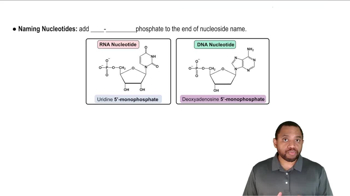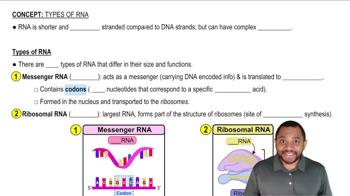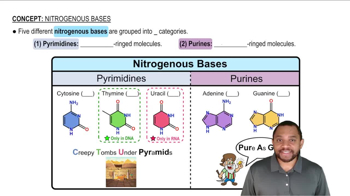Textbook Question
Identify each of the following as a nucleoside or a nucleotide:
b. deoxycytidine
936
views
 Verified step by step guidance
Verified step by step guidance Verified video answer for a similar problem:
Verified video answer for a similar problem:



 2:19m
2:19mMaster Naming Nucleosides and Nucleotides Concept 1 with a bite sized video explanation from Jules
Start learning